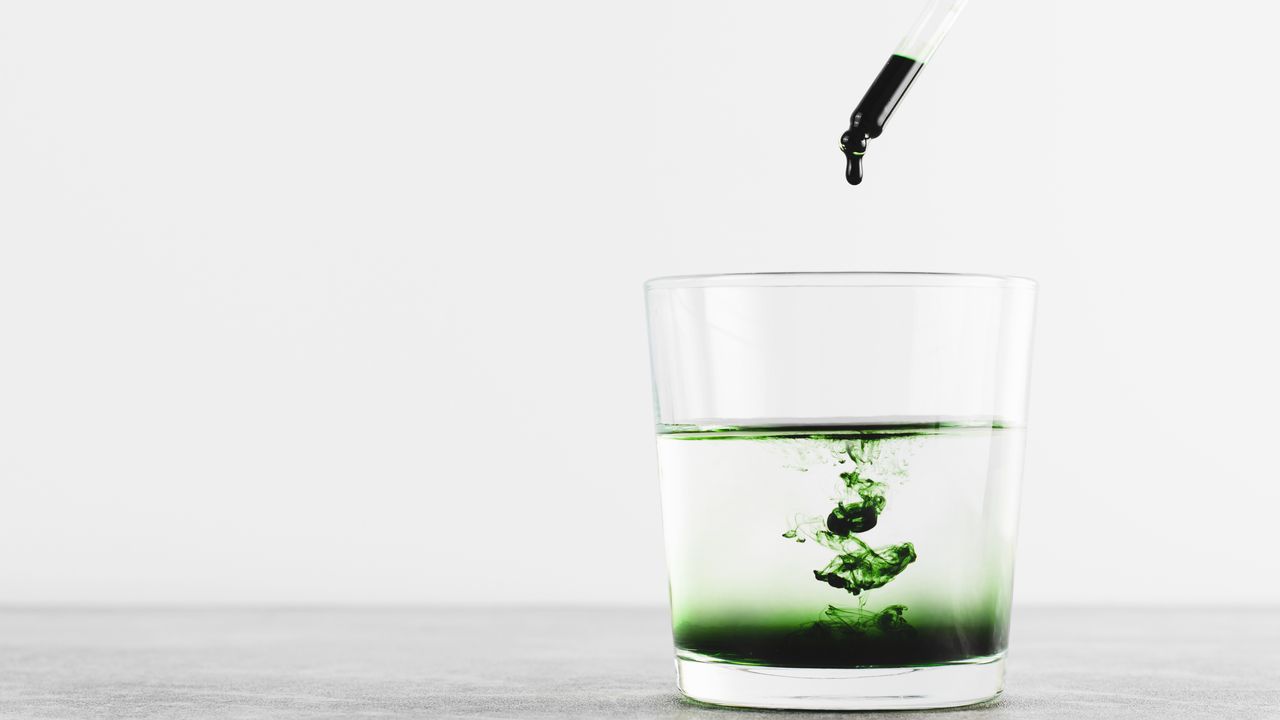Blog
Are chlorophyll benefits worth the hype? Here’s what the experts say

“It also appears to stimulate the regeneration of damaged liver cells, and appears to be more potent than traditional herbs, like milk thistle, dandelion and artichoke.” Worth knowing if you are partial to a couple of cocktails.
5. Aids good gut health (and digestion)
So far, so (really) good. But it is also an excellent colon conditioner, helps increase circulation to all the organs in the body and has powerful antimicrobial properties that help to reduce the number of pathogenic micro-organisms, including yeasts, living in the gut, many of which have been linked to inflammatory bowel disorders. Inflammatory bowel disorders, in turn, are linked to mental health issues and poor skin health.
Are there any risks associated with taking chlorophyll?
As with all dietary supplements, there are considerations that need to be taken into account. “Generally, chlorophyll is considered safe and well-tolerated,” advises Dr Murthy. “But, because it may affect liver enzymes or bind to nutrients, there’s a theoretical risk it could reduce absorption of certain medications or supplements if taken at the same time.”
He says it’s best to take chlorophyll separately and leave at least an hour or two between it and other supplements or medication. “Anyone on blood-thinners should consult their practitioner first, just as a precaution,” he warns.
Is there anyone who shouldn’t take chlorophyll?
Yes, if you’re on medications that increase your sensitivity to sunlight (like certain antibiotics or acne treatments). In that case, it’s best to avoid high doses of chlorophyll as it can mildly increase photosensitivity, warns Dr Murthy. This means the skin can become more prone to sun damage, sunburn and other UV-related side effects than it might be otherwise. “Also, people with digestive disorders or a tendency to diarrhoea should proceed with caution, especially when taking liquid forms of chlorophyll.”
For Stephenson, a similarly cautious attitude is necessary for pregnant or breastfeeding people. “Like most things in pregnancy, there’s insufficient safety data for high doses of chlorophyll,” she says, noting that it’s better to prioritise dietary sources of the nutrient. “That being said, lower doses of chlorophyll are unlikely to cause harm. One study showed chlorella supplementation in pregnant patients with low-grade inflammation was safe and decreased the prevalence of constipation.”
As ever, be diligent about discussing any chlorophyll supplementation with your doctor or healthcare practitioner before proceeding.
How to take chlorophyll safely
Because chlorophyll isn’t an essential nutrient, there’s no official recommended daily allowance. “Most liquid supplements suggest around 100 to 300mg per day,” says Dr Murthy. Like with most things, though, more isn’t always better. “If you’re eating a plant-rich diet, you’re likely already getting small amounts from spinach, parsley, wheatgrass and similar greens,” he explains. It’s best to think of chlorophyll as a beneficial addition to your diet, not a catch-all for replacing nutrient-rich green vegetables and herbs.
Does chlorophyll have a taste?
Yes, though it’s not enough to put the true believers off. “Most people describe its taste as earthy, grassy or even metallic,” describes Dr Murthy. If you’ve ever tasted raw spinach juice, he says, you’re bang on the money for knowing what natural chlorophyll tastes like. “Liquid chlorophyll supplements can be strong-tasting, which is why they’re often diluted in water or mixed with mint,” he says.
This article first appeared on Vogue.co.uk
Also read:
Your grandmother was right, chaas might be the best daily ritual for your gut
What is clear whey protein and is it better for you?
5 things that changed after I quit sugar












